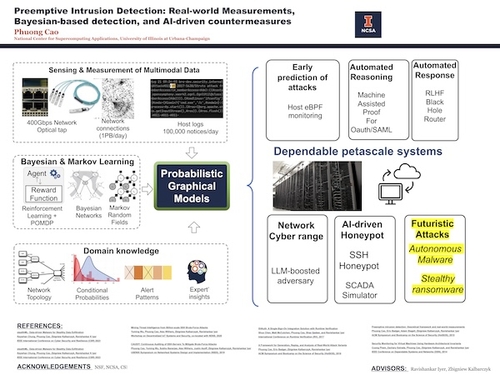Presentation
Preemptive Intrusion Detection: Real-World Measurements, Bayesian-Based Detection, and AI-Driven Countermeasures
DescriptionThe problem of preempting attacks before damages remains the top security priority. The gap between alerts and early detection remains wide open because noisy attack attempts and unreliable alerts mask real attacks from humans. This dissertation brings together: 1) attack patterns mining driven by real security incidents, 2) probabilistic graphical models linking patterns with runtime alerts, and 3) an in vivo testbed which embeds a honeypot in a live Science DMZ network for realistic assessment. Traditional techniques that seek specific attack signatures or anomalies are ineffective because defenders only see a partial view of ongoing attacks while having to wrestle with unreliable alerts and heavy background noise of attack attempts. In contrast, our principle objective is to reinforce scant, incomplete evidence of potential attacks with the ground truth of past security incidents. We evaluated our system, Cyborg's, accuracy, and performance in three experiments at the National Center for Supercomputing Applications at the University of Illinois. Our deployment stops 8 out of 10 replayed attacks before system integrity violation and all ten before data exfiltration. In addition, we discovered and stopped a family of ransomware attacks before the data breach. During the period of deployment, this thesis resulted in a honeypot that collected 15 billion attack attempts (the world's largest publicly analyzed dataset) for analytics. In the future, we are looking at integrating AI techniques such as large language models to build intelligent honeypot systems that are indistinguishable from real systems to collect attack intelligence and educate the security operator.

